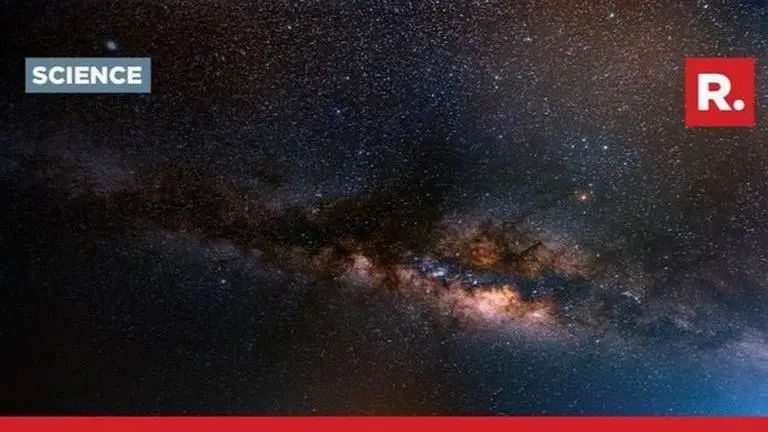Updated 24 February 2023 at 08:17 IST
New estimate finds the Milky Way is churning out more new stars than expected
Space researchers found that gamma rays from radioactive isotope aluminum-26 showed that the Milky Way possesses the ability to yield tonnes of new stars.
- Science News
- 2 min read

The Milky Way is transcending expectations about how many stars it can churn out, researchers have found. According to American outlet Science News, the spiral galaxy has an impressive star birth rate. Space researchers submitted their work to arXiv.org and found that gamma rays from radioactive isotope aluminum-26 showed that the Milky Way possesses the ability to convert four to eight solar masses of gas and dust into brand new stars every year.
This means that every million years, the galaxy yields 10 million to 20 million new stars, which are enough to occupy some 10,000 star clusters such as the Pleiades cluster in the Taurus constellation. On the other hand, several galaxies, especially those that orbit ours, do not make any new stars at all.
“The star formation rate is very important to understand for galaxy evolution,” said Thomas Siegert, an astrophysicist at Germany's University of Würzburg. A galaxy's ability to create stars helps massively in enriching itself with elements such as iron and oxygen which, in turn, help in altering star-making gas clouds.
Siegert, along with his colleagues, analysed the distribution of aluminum-26 emission and its intensity in the Milky Way. A large star forms this isotope throughout its life and death. In the former stage, it pushes the aluminum in space through strong winds. On the other hand, when a star dies, its supernova creates more. Later on, the isotope decays and emits gamma rays.
Advertisement
What are gamma rays?
Gamma rays are similar to X-rays, as they penetrate the dust that covers young stars. Speaking about the process, Siegert said: “We’re looking through the entire galaxy. We’re not X-raying it; here we’re gamma-raying it.” The more stars that the Milky Way yields, the more gamma rays are formed.
With the observations, researchers deduce that the star formation rate of our galaxy is four to eight solar masses a year, which is higher than the regular estimate of around two solar masses a year. According to Pavel Kroupa, an astronomer at the University of Bonn in Germany, the new findings are extremely realistic. “I’m very impressed by the detailed modeling of how they account for the star formation process. It’s a very beautiful work. I can see some ways of improving it, but this is really a major step in the absolutely correct direction," he said.
Advertisement
Published By : Deeksha Sharma
Published On: 24 February 2023 at 08:10 IST
